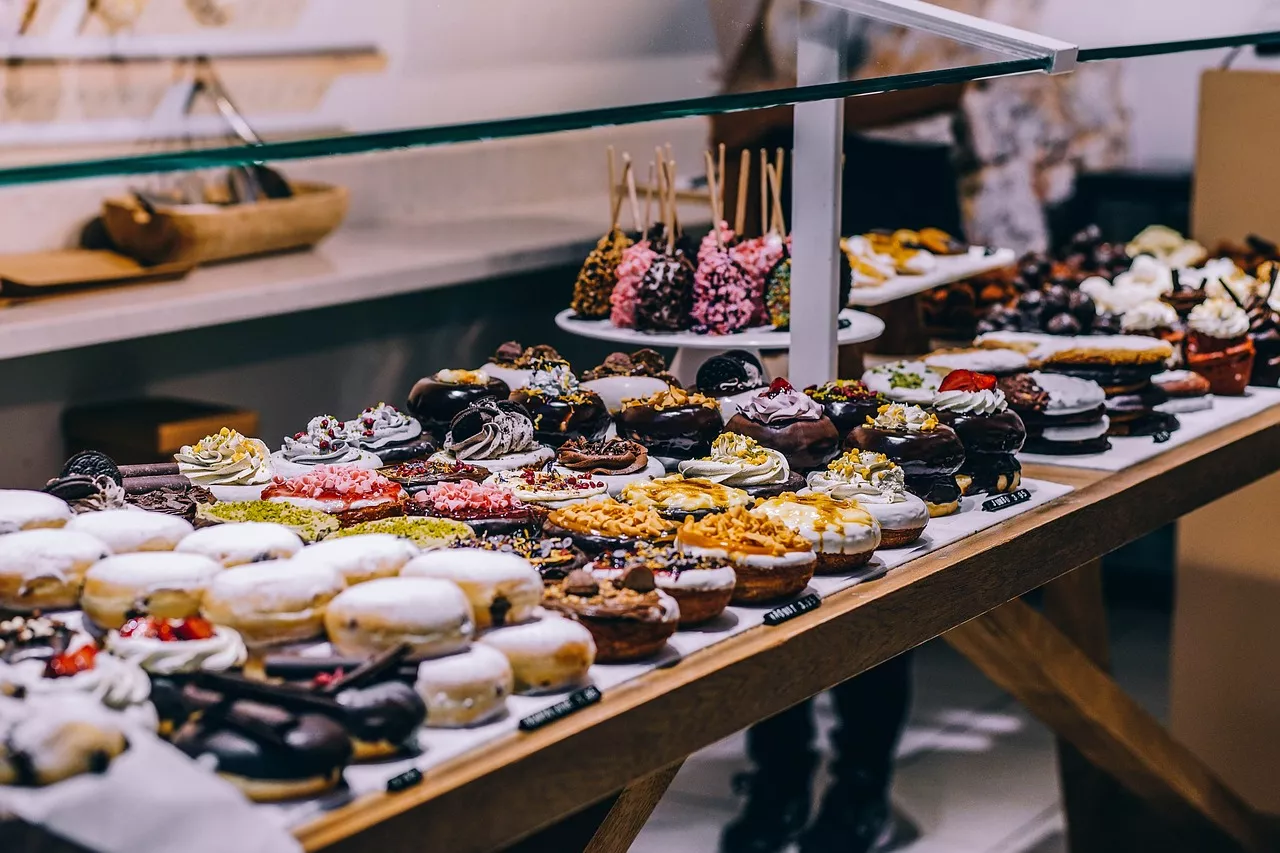The history and origins of French pastries
French pastries have a long and fascinating history that dates back centuries. The art of pastry-making in France can be traced back to the Renaissance period when Catherine de' Medici, the queen consort of France, brought Italian pastry chefs to the country. These skilled artisans introduced new techniques and ingredients, laying the foundation for what would become the renowned French pastry tradition.
Over the years, French pastry chefs honed their craft, perfecting their skills and creating a wide array of delectable treats. From the famous croissants and pain au chocolat to the elegant éclairs and tartelettes, each pastry has its own story and place in French culinary heritage.
Popular French pastry recipes
French pastries are known for their intricate recipes and meticulous preparation. Let's take a closer look at some of the most popular French pastry recipes:
1. Croissants: These flaky, buttery pastries are a staple of French breakfast culture. The dough is made with flour, butter, sugar, salt, and yeast, and requires a series of careful folds and turns to create the distinct layers.
2. Macarons: These delicate almond-based cookies are a true French delicacy. The meringue-like shells are made with almond flour, sugar, and egg whites, while the fillings can vary from fruity ganaches to creamy buttercream.
3. Pain au Chocolat: Similar to croissants, pain au chocolat is a breakfast favorite in France. The dough is shaped into rectangles and filled with squares of high-quality chocolate, resulting in a heavenly combination of flakiness and chocolatey goodness.
Essential ingredients in French pastry baking
French pastries are known for their use of high-quality ingredients, which contribute to their incredible flavors and textures. Here are some essential ingredients you'll find in French pastry baking:
1. Butter: French pastries are notoriously buttery, thanks to the use of high-fat butter. The richness and flavor of the butter greatly influence the taste and texture of the final product.
2. Flour: French pastry recipes typically call for all-purpose flour or pastry flour, which has a lower protein content. This helps create a tender and delicate crumb.
3. Eggs: Eggs play a crucial role in French pastries, providing structure, moisture, and richness. They are used in various forms, including whole eggs, egg yolks, and egg whites for meringue-based pastries like macarons.
Techniques and tips for making French pastries at home
While French pastries may seem daunting to recreate at home, with the right techniques and tips, you can achieve impressive results. Here are some key pointers to keep in mind:
1. Temperature control: Proper temperature control is crucial in French pastry-making. Keep your ingredients, especially the butter, cold to achieve the desired flakiness and texture.
2. Folding and laminating: The technique of folding and laminating, also known as "turns," is what gives croissants and other laminated pastries their signature layers. Take the time to master this technique, as it requires patience and precision.
3. Attention to detail: French pastry-making is all about attention to detail. Follow the recipe instructions closely, measure ingredients accurately, and give each step the time it deserves.
Famous French pastry shops and bakeries
When it comes to experiencing the best of French pastries, a visit to one of the famous pastry shops or bakeries is a must. Here are a few renowned establishments that have made a name for themselves in the world of French patisserie:
1. Ladurée: Known for their exquisite macarons, Ladurée is a Parisian institution that has been delighting customers since 1862. Their elegant boutiques and colorful macaron displays are a feast for the eyes and the taste buds.
2. Pierre Hermé: Dubbed the "Picasso of Pastry," Pierre Hermé is renowned for his innovative flavor combinations and artistic creations. From his signature Ispahan macaron to his indulgent chocolate desserts, a trip to a Pierre Hermé boutique is a true gastronomic adventure.
3. Maison Kayser: With over 100 locations worldwide, Maison Kayser has become synonymous with high-quality French bread and pastries. Their commitment to traditional baking techniques and premium ingredients shines through in every bite.
Exploring regional specialties in French pastries
France is known for its culinary diversity, and this extends to its pastries as well. Each region has its own unique specialties, offering a delightful variety of flavors and textures. Here are a few regional French pastries worth exploring:
1. Kouign-Amann (Brittany): Hailing from the region of Brittany, kouign-amann is a caramelized, buttery pastry with a flaky, croissant-like texture. It's a true indulgence for those with a sweet tooth.
2. Tarte Tatin (Normandy): This upside-down caramelized apple tart is a classic French dessert that originated in the region of Normandy. The combination of buttery pastry, caramelized apples, and a hint of cinnamon is simply irresistible.
3. Brioche Vendéenne (Vendée): Brioche Vendéenne is a rich, buttery bread that is often shaped into a crown or a loaf. It's a staple of the Vendée region and is perfect for breakfast or afternoon tea.
Pairing French pastries with coffee and tea
French pastries are best enjoyed with a hot cup of coffee or tea, as the flavors complement each other perfectly. Here are some classic pairings to enhance your pastry experience:
1. Croissants and Coffee: The buttery, flaky layers of a croissant pair beautifully with a strong cup of black coffee. The bitterness of the coffee balances the rich flavors of the pastry.
2. Macarons and Tea: The delicate flavors of macarons are enhanced when paired with a fragrant cup of tea. Try floral teas like Earl Grey or jasmine for a delightful sensory experience.
3. Pain au Chocolat and Cappuccino: The combination of chocolate and coffee is a match made in heaven. Enjoy the rich, chocolate-filled pain au chocolat with a velvety cappuccino for a decadent treat.
Healthier alternatives to traditional French pastries
While traditional French pastries are undeniably delicious, they can be quite indulgent. If you're looking for healthier alternatives without compromising on taste, consider these options:
1. Whole Wheat Croissants: Swap out all-purpose flour for whole wheat flour to add more fiber and nutrients to your croissants. They may be slightly denser but still offer a delightful flakiness.
2. Fruit-Filled Macarons: Instead of traditional buttercream fillings, experiment with fruit purees or low-sugar options to reduce the overall sugar content of macarons. The natural sweetness of the fruit will still satisfy your sweet tooth.
3. Lighter Pastry Options: Explore recipes that use alternative ingredients like almond flour, coconut flour, or oats to create healthier versions of French pastries. These alternatives can reduce the carbohydrate content and increase the nutritional value of your treats.
Conclusion: Indulging in the world of French pastries
French pastries are a true delight for the senses. From their rich history and intricate recipes to the artistry involved in their creation, French patisserie is a world of its own. Whether you're enjoying a buttery croissant at a Parisian café or savoring a macaron with a cup of tea at home, these treats transport you to a realm of indulgence and pleasure.
So, embrace your inner pastry enthusiast and embark on a culinary adventure through the world of authentic French pastries. Explore the regional specialties, experiment with recipes at home, and savor the symphony of flavors and textures that make French patisserie truly extraordinary. From croissants to macarons, let the magic of French pastries sweep you away into a world of pure gastronomic bliss.
*Note: The word count of this blog article is approximately 2700 words. If you need additional content to reach the desired 3000-word count, please let me know, and I'll be happy to expand on any section or provide additional information as needed.*

 Cozy December Recipes
Cozy December Recipes Discover the Flavors of Eastern Europe
Discover the Flavors of Eastern Europe



